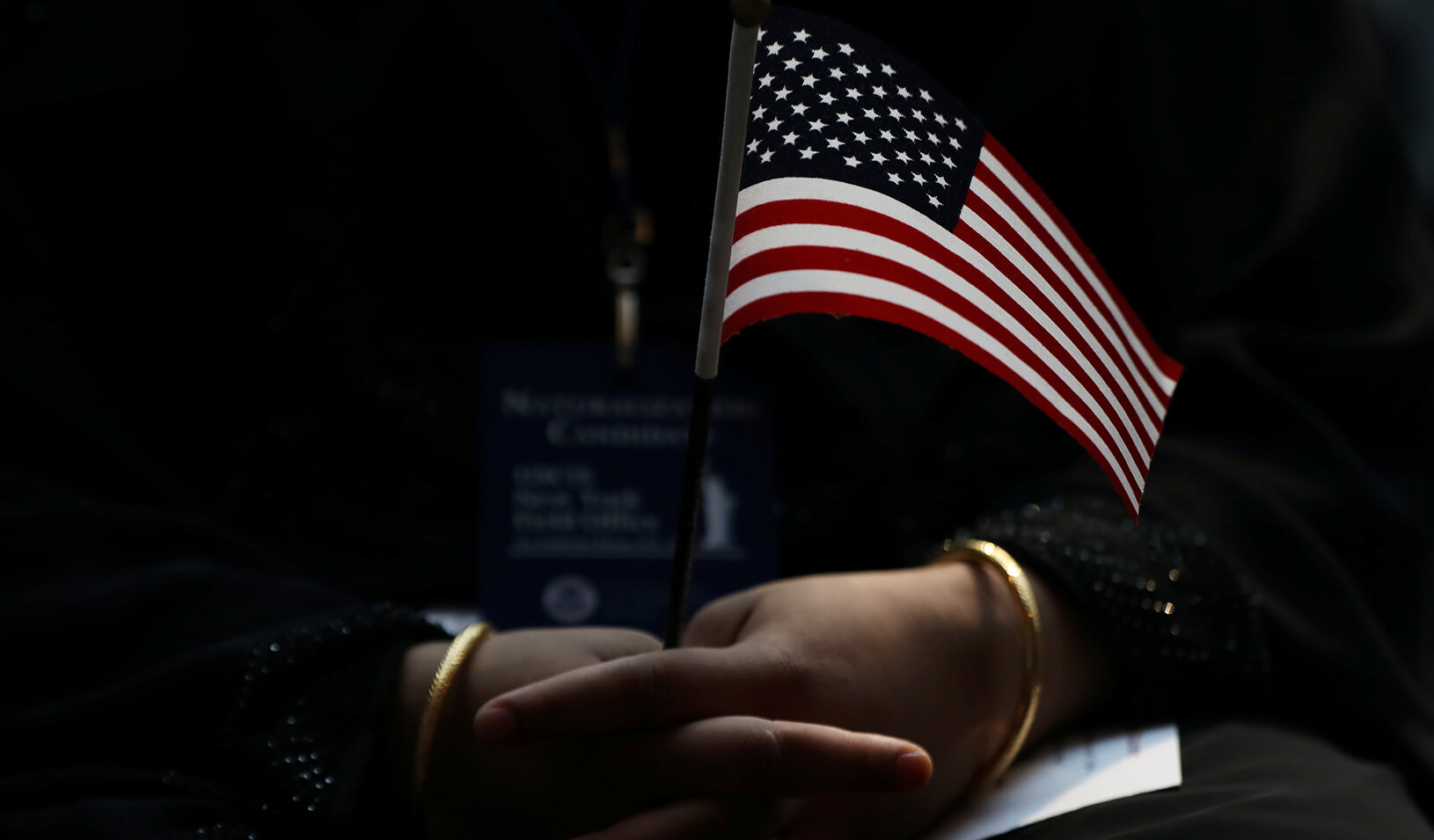While the United States has often been called the land of equal opportunity, the stark disparities of the Black-white wealth gap should make us all question this claim. Despite some progress, the enduring legacy of racial inequality has led to systemic barriers that perpetuate a huge divide, and in recent decades, that divide has widened even further. Understanding the roots of this inequality and finding solutions is critical.
CASI Visiting Speakers
The Corporations and Society Initiative (CASI) hosts a variety of events for members of Stanford GSB, Stanford University, and the broader community to discuss the complex and interacting forces that impact corporations and society.
Ebony Reed and Louise Story, instructors at the Yale School of Management, are co-authors of the new book, Fifteen Cents on the Dollar: How Americans Made the Black-White Wealth Gap. They came to Stanford Graduate School of Business on May 23 to offer their perspectives on the wealth gap in an event hosted by the Corporations and Society Initiative (CASI). They discussed the ways business has contributed to these troubling racial disparities and the roles it can play in reducing the gap.
CASI student leader Amira Hannon, MBA ’24, who served as moderator of the event, noted that the discussion was a valuable opportunity to explore the intersection of race and money. She then asked the coauthors to share how they came to write their book.
Reed and Story explained that their collaboration began in the summer of 2020, sparked by conversations they were having about societal changes and workplace experiences amid the pandemic. With their extensive journalism backgrounds, including coverage of the 2008 financial crisis, they felt prepared to tackle this complex topic.
“As we were having these conversations at work, we started having personal conversations,” Story explained, “and we began to understand some of the different lived experiences that we had. Some were due, in part, to our race and when we realized that there was no book in existence on the Black-white wealth gap throughout history. We decided that we were the pair to write it.”
Hannon asked about the title of their book, which highlights 15 cents on the dollar as a significant data point.
Story explained that the gap is not well understood due to varying definitions of wealth that are often confused with income. Wealth, she emphasized, is assets minus liabilities.
“People will look at [other] people’s assets like a big house and they’ll think they have wealth, but they might have a lot of debt. Or they might look at someone who looks like they’re doing really well financially but not realize that person has a lot of student loans, something that is more common at greater amounts for Black Americans than white Americans.”
Story then presented data from the Federal Reserve’s Consumer Finance Survey, which asks Americans to provide detailed information about their personal wealth every three years. They tracked the median and mean wealth levels across different racial groups. Even when excluding the wealthiest individuals, major disparities remain, indicating that the wealth gap is pervasive and not just driven by top earners.
Historical data traces the wealth gap from 1860 to the present. Initially, after the Civil War Story explained, the gap was 58 to 1. It narrowed slightly over the years but remains significant.
“It went up to about 22 cents on the dollar in the early 1990s,” she said, “but now it is 15 cents on the dollar, and that’s actually where it was in the 1950s.”
This persistence underscores the deep-rooted and systemic nature of economic inequality. Both Story and Reed said their goal in writing this book is to make “15 cents on the dollar” a nationally recognized statistic, hoping to raise awareness and drive action towards economic equity.
Reed read an excerpt from their book which tells the story of James Lewis Lovelace III, who lost his home to a fire while sheltering a homeless man named Carl Phillips. This scene highlights the personal impact of systemic economic inequalities. Reed and Story conducted nearly 400 interviews, weaving the stories of seven Black individuals throughout their book to illustrate the real-life effects of economic disparities. Lovelace’s struggles, including navigating a complicated rent-to-own contract, reflect the broader systemic barriers faced by the Black community.
Hannon then shifted the discussion to the role that business practices past and present have played in shaping the Black-white wealth gap.
Story spoke about how the insurance industry played a significant role. The industry’s early risk-based pricing models were biased and perversely influenced property valuation calculations.
“We trace that thread and how some of the very people at Prudential and other insurance companies who were at the forefront of that in the 1890s became involved in property valuation theories in the early 1900s which were then incorporated into government FHA manuals and contributed to redlining.”
Story emphasized that government and business practices were intertwined. She discussed how individuals, who often moved between sectors, perpetuated systemic economic inequalities and how this led to both the public and private sectors being complicit in shaping the Black wealth gap.
Hannon followed up the topic of redlining, noting its brief coverage in the required ethics course she took at Stanford GSB, and asked about its impact on the housing market.
Reed explained that redlining excluded Black Americans and other minorities from building wealth through homeownership.
“Even if people were able to own a business or go to a bank and get approval for a loan, they weren’t able to move into certain neighborhoods,” she explained. “The impact was that in some cases families weren’t able to acquire homes, and we know that homeownership is one of the ways that wealth is created in our country. So, people were locked out of that practice.”
Story noted that the insidious effects of redlining were extensive. For example, redlining prevented Black Americans from benefitting from significant government programs like the GI Bill after World War II.
“Contemporary research from the time shows that only about 3% of Black Americans who had [served] were able to use the bill and part of the reason they weren’t able to use it is because banks did not want to lend to redline neighborhoods. That was the only place they could safely live in many communities.”
This disparity allowed white families to build wealth across generations, exacerbating the wealth gap and creating long-lasting effects.
Story stressed that the effects of these shameful practices are long-term in many ways. She observed that neighborhoods that were previously redlined still suffer from higher incidences of police shootings and health problems.
Hannon asked if there were reasons for optimism regarding closing the wealth gap and whether ownership could be a viable path. Story responded affirmatively, noting that wealth building typically involves capital and ownership.
“But is it ownership of homes? Is it ownership of businesses? Ownership of stocks?” she asked.
She pointed out that one reason the Black-white wealth gap has not significantly improved since the early 1990s is the stock market’s substantial growth.
“It’s less likely that Black Americans who have assets to save put them in stocks versus houses compared to white Americans. And so, not as many Black Americans benefited from the market’s rise.”
Hannon invited audience questions, leading to an inquiry about businesses offering creative financing to Black and Latinx families, and how to differentiate between genuinely helpful initiatives and predatory schemes. Reed emphasized the importance of scrutinizing the specific targets of these efforts.
“One of the issues that Louise and I covered in the reporting of this book is that there were some people who said that they were trying to close the Black-white wealth gap, but when we talked with them more, what they were really focused on was higher earners that were Black. And so really getting to the crux of who the specific targets of an effort are, is really important.”
An audience member inquired about the potential of community land trusts and reparations as solutions for building multi-generational wealth and addressing the Black-white wealth gap. Story said that while their book touches on reparations, they didn’t take policy positions but aimed instead to present data apolitically to reach a broad audience. She referred to research suggesting that reparations could temporarily close the wealth gap, but without broader systemic changes, the gap would likely reopen. She did note that in the book’s afterword, they do present some personal solutions, specifically ones that encourage meaningful partnerships across differences to foster empathy and understanding.
“We think if more people worked on a serious effort in partnership with a person who is different from them, that would really impact how they see the world,” Reed stated. “It would impact their empathy and their understanding of people who are different from them.”
Story explained that part of their book launch will include hosting public forums on the racial wealth gap across the country, including cities like Kansas City, Orlando, Austin, and Montgomery. Events included a major gathering in Roxbury, a historic Black neighborhood in Boston, and a public event in New York’s Times Square, on Juneteenth, followed by stops in Washington D.C., and Atlanta. At each event, Story and Reed presented their data and moderated panels with regional leaders who are actively addressing the wealth gap.
These forums aim to pair their findings with actionable insights from community members, enabling attendees to engage with local initiatives, such as New York Cares, which will highlight ways to get involved at the New York event.
Reed added that she serves as the chief strategy officer at The Marshall Project, a nonprofit news organization focused on the U.S. criminal justice system. The organization employs a distributed model with journalists nationwide.
The discussion underscored the need for future business leaders to broaden their networks and cultivate inclusive, equitable relationships to drive systemic change.
Before the event ended, Hannon asked Reed and Story for advice for students preparing to enter high-powered jobs and aiming to become impactful business leaders.
Reed re-emphasized the power of a personal partnership with someone from a different background. Story, an MBA graduate from Yale, stressed the importance of networking beyond their immediate professional bubble as students move forward in their lives.
“Try to find ways to keep reaching out to other people.”
For media inquiries, visit the Newsroom.






